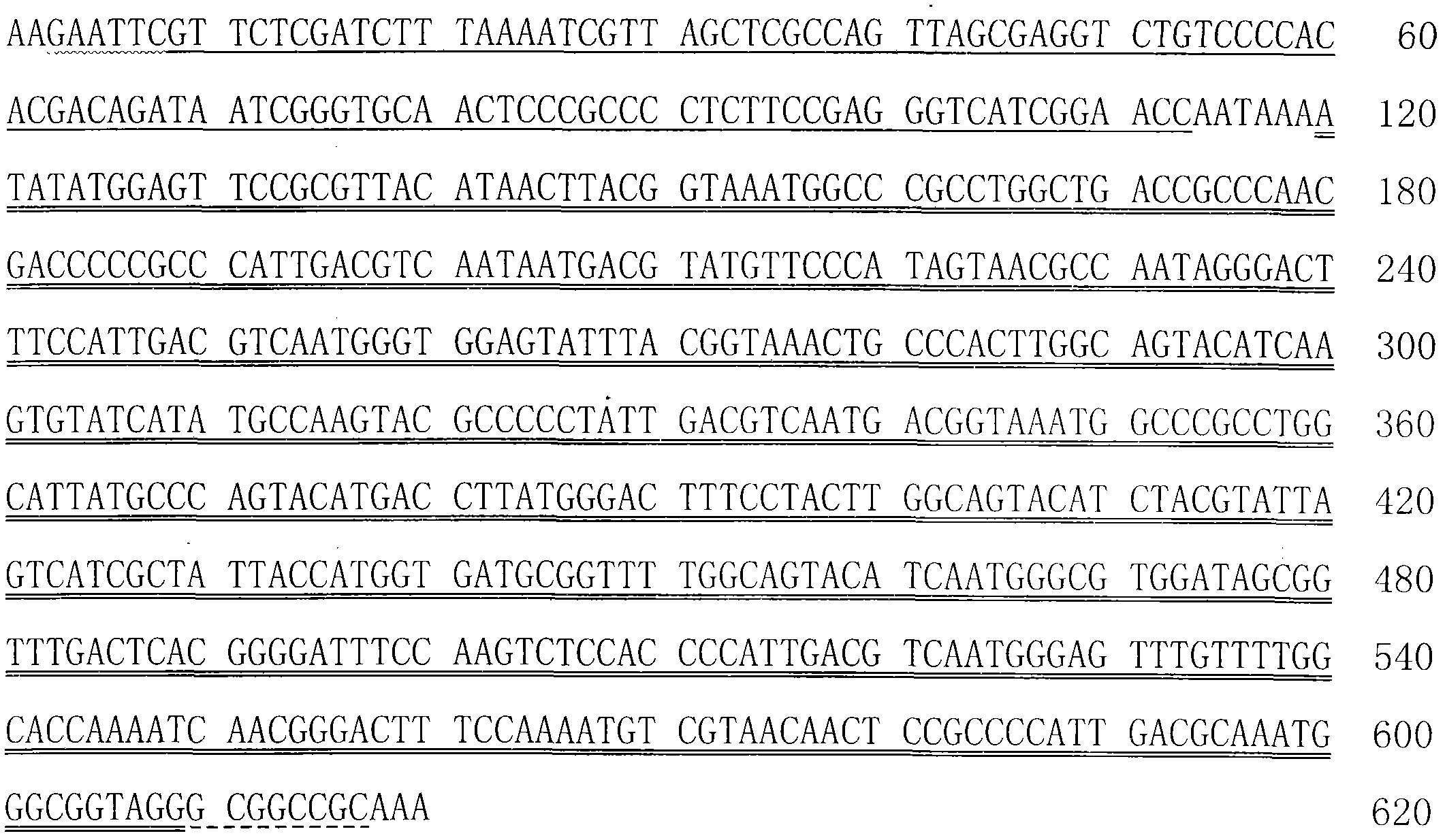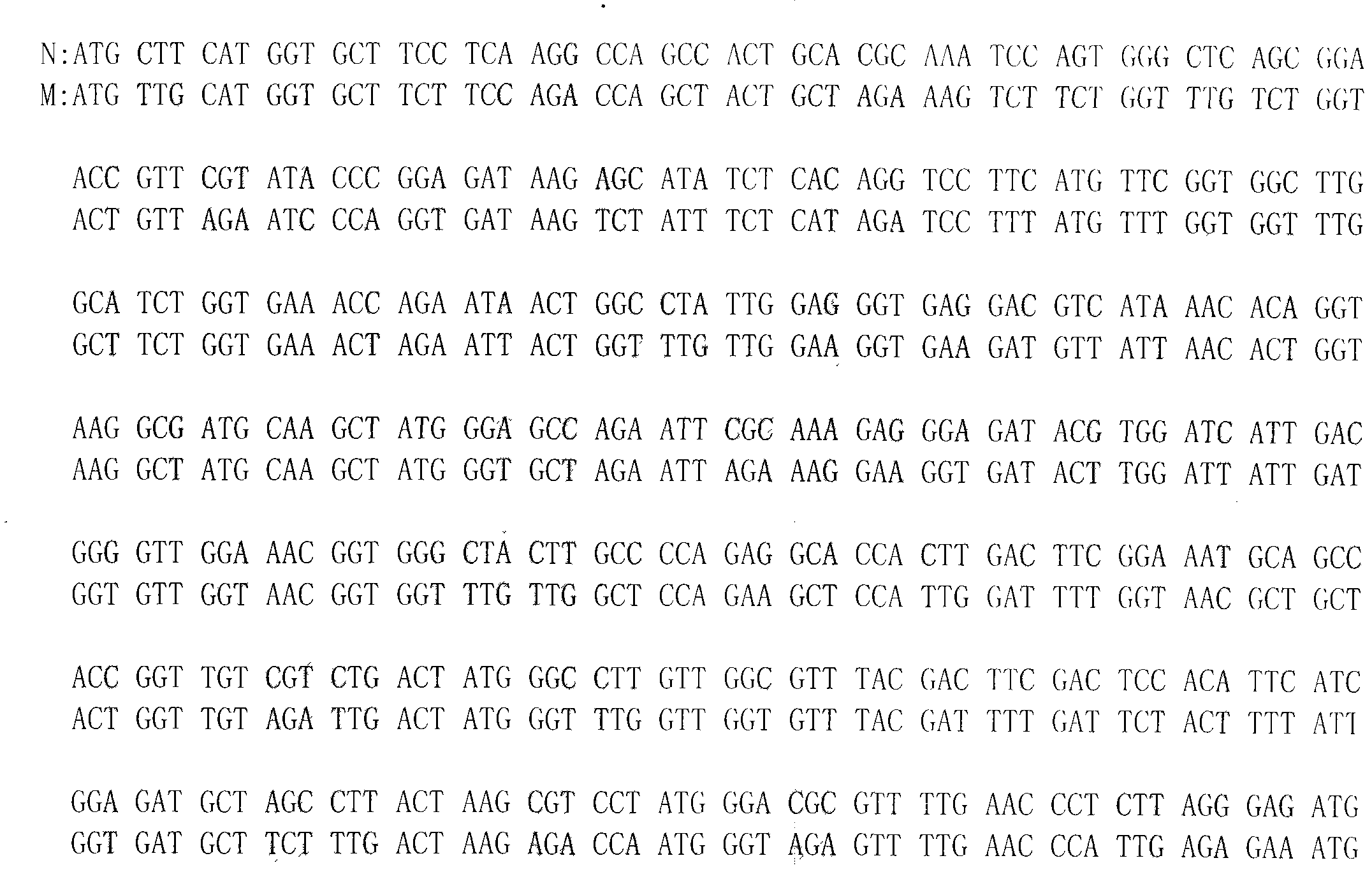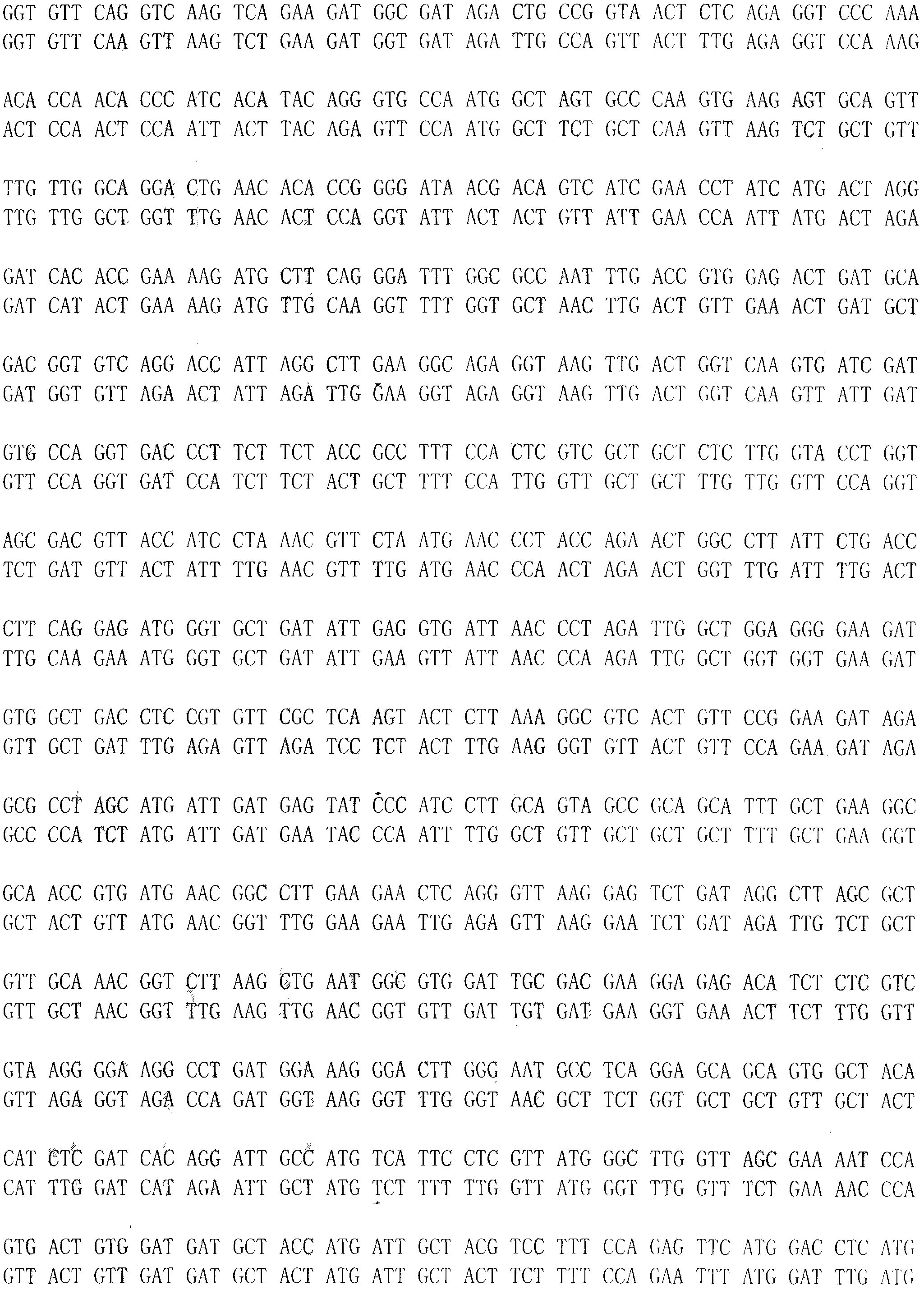Method for increasing expression of CP4-EPSPS in Hansenula polymorpha
A technology of CP4-EPSPS and Hansenula, which is applied to peptide preparation methods, microbial-based methods, chemical instruments and methods, and can solve problems such as increasing the expression level of CP4-EPSPS
- Summary
- Abstract
- Description
- Claims
- Application Information
AI Technical Summary
Problems solved by technology
Method used
Image
Examples
Embodiment 1
[0040] Embodiment 1: Artificial synthesis of TYMV-HCMV composite enhancer
[0041] According to the published DNA sequences of Turnip yellowmosaic virus (TYMV) (see GenBank, accession number: X07441) and Human cytomegalovirus (HCMV) (see GenBank, accession number: K03104), according to the codon preferred by yeast (Sharp P M, et al., 1986), artificially designed and synthesized a new composite enhancer sequence (see SEQ ID NO: 1), in this sequence, 105 nucleotide bases are the 3' non-coding region of TYMV (The 6214th to 6318th nucleotide base of the TYMV genome) (see attached figure 1 The single underlined part in the middle), there are 490 nucleotide bases derived from the core part of the early gene enhancer of HCMV (the 201st to 690th nucleotide bases) (see appendix figure 1 At the same time, in order to facilitate the construction of yeast expression vectors, in the process of artificially synthesizing the composite enhancer sequence, a restriction enzyme site EcoR was sy...
Embodiment 2
[0042] Embodiment 2: Artificial synthesis of CP4-EPSPS gene after codon optimization
[0043] The CP4-EPSPS gene is derived from the Agrobacterium CP4 strain, and its codons are preferred by prokaryotes, while Hansenula belongs to eukaryotes, so there are certain differences in their gene codon preferences, and this difference is likely to cause It affects the stability and expression efficiency of CP4-EPSPS gene and its transcription product in Hansenula cells. In order to improve the biological yield of CP4-EPSPS, according to the DNA sequence (originally plant-preferred codon) and amino acid sequence (see GenBank, accession number: JF445290) of the published CP4-EPSPS gene, without changing its amino acid sequence Next (see SEQ ID NO: 2), according to the preferred codons of yeast (Sharp P M, et al., 1986), the DNA coding sequence of the new CP4-EPSPS mature protein was artificially designed and synthesized, codon optimization and transformation Compared with the original ...
Embodiment 3
[0044] Embodiment 3: Cloning of TYMV-HCMV composite enhancer and CP4-EPSPS gene
[0045] The above artificially synthesized TYMV-HCMV composite enhancer sequence and CP4-EPSPS fusion protein gene DNA fragment were directly inserted into the T site of pEASY-T1 (purchased from Beijing TransGenic Company) plasmid, according to the method provided by the company , to obtain bacterial clones containing intermediate plasmid vectors TYMV-HCMV-T and CP4-EPSPS-T (see attached image 3 ), and then, through DNA sequencing, it was determined that the TYMV-HCMV-T composite enhancer and CP4-EPSPS-T gene sequences contained in it were correct and complete (DNA sequencing was completed by Beijing Biaokai Technology Co., Ltd.).
PUM
| Property | Measurement | Unit |
|---|---|---|
| molecular weight | aaaaa | aaaaa |
Abstract
Description
Claims
Application Information
 Login to View More
Login to View More - R&D
- Intellectual Property
- Life Sciences
- Materials
- Tech Scout
- Unparalleled Data Quality
- Higher Quality Content
- 60% Fewer Hallucinations
Browse by: Latest US Patents, China's latest patents, Technical Efficacy Thesaurus, Application Domain, Technology Topic, Popular Technical Reports.
© 2025 PatSnap. All rights reserved.Legal|Privacy policy|Modern Slavery Act Transparency Statement|Sitemap|About US| Contact US: help@patsnap.com



